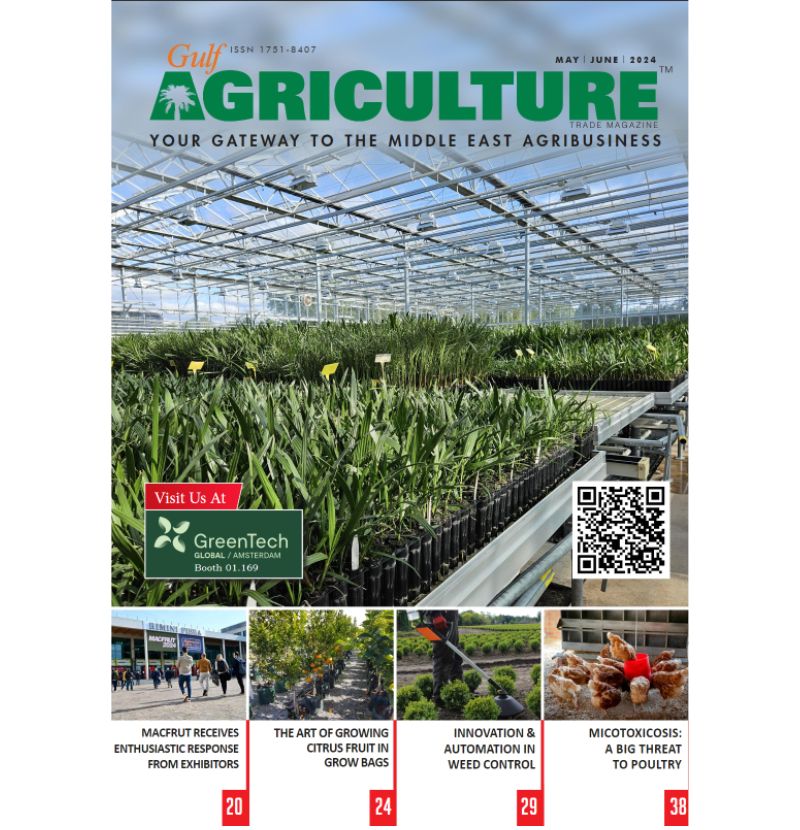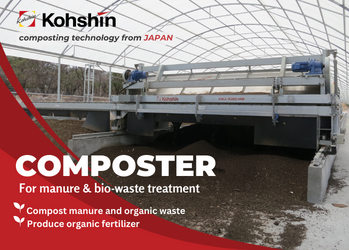Quinoa breeders now have the genetic information about the crop which will help them develop high-yielding, early-maturing quinoa varieties which are not bitter in taste in record time.
In a study published in Scientific Reports, scientists from the International Center for Biosaline Agriculture (ICBA) identified specific segments of DNA that are associated with different traits, such as days to flowering, seed weight, and saponin content. By marking those segments, breeders can fast-track their programs and develop tailored quinoa varieties with desired traits.
Quinoa has garnered global attention for its adaptability to marginal environments and its exceptional nutritional quality. ICBA has long recognized the significance of quinoa within agricultural systems, particularly since it can survive in water which is up to a third as salty as seawater.
If quinoa is to be economically viable on a global scale and if farmers are going to adopt it, breeders will need to develop varieties with the traits that farmers are desiring. These include shortening the time from sowing to harvest, decreasing the bitter taste and improving its water-use efficiency.
Large-scale breeding of quinoa can be quite challenging and time-consuming, in part due to the plant’s small flowers and the complexity of its reproductive methods. ICBA scientists endeavored to add more tools to the breeders’ toolbox so they can significantly reduce the time and complexity required to breed improved varieties.
To conduct the study, researchers needed access to diverse quinoa germplasm. They selected 201 accessions from the 1,000 accessions safeguarded in ICBA’s genebank. They sowed these seeds and then recorded the observable characteristics of each plant in the field, such as days to 50% flowering, plant height, saponin content, and seed yield.
The scientists then determined the genetic makeup of each accession by examining its DNA sequence. This process, or genotyping, allowed the scientists to identify genetic variations, such as single nucleotide polymorphisms (SNPs). Once SNPs are identified, the scientists could identify marker-trait associations, which are genetic markers that are correlated with particular traits or observable characteristics.
One trait of interest to quinoa breeders is the saponin content. Saponins are chemical compounds which give quinoa an undesirable bitter taste. The scientists were able to confirm that the marker-trait association for saponin content lies on several chromosomes and quite consistently on chromosome 5B. Armed with this information, breeders will be better equipped to develop low-saponin varieties of quinoa, which is a trait farmer have been requesting.
The scientists then identified genomic regions in quinoa. These regions can vary in size from a few DNA base pairs to millions of base pairs. They may contain genes, regulatory elements, non-coding DNA sequences or other functional elements that play a role in quinoa’s biology. For example, the scientists identified a genomic region known as qTGW1B.1, which contains 14 genes that regulate thousand-grain weight. Another genomic region identified regulates panicle length.
With the genomic regions defined, the scientists could then identify candidate genes that warrant further investigation and validation to confirm their role in the biological process or condition of interest.
This landmark study will help quinoa breeders develop desired varieties that will be more widely adopted by farmers and provide them with higher incomes. Farmers will have access to “free to use” high-yielding improved varieties which mature early and are less bitter, reducing their reliance on varieties from the private sector which are often poorly adapted to relatively hot regions.
Dr. Tarifa Alzaabi, Director General of ICBA, said: “Quinoa is considered a super crop for its exceptional qualities and holds considerable promise for global food security and nutrition. With over 15 years of research and development in quinoa, ICBA has accumulated considerable knowhow and expertise in developing varieties adapted to local conditions in different countries. This work has involved various approaches and technologies, including genomics, to breed varieties with specific traits. Since 2021, the Desert Life Science Lab at ICBA has played an important role in identifying key genomic regions by resequencing more than 200 accessions of quinoa. These genomic regions are now being used for developing sweet (low-saponin) and early-maturing quinoa genotypes.”
Dr. R. K. Singh, program leader on crop diversification and genetics at ICBA and one of the lead authors of the paper, said: “This study marks a significant advancement in quinoa research, shedding light on the genetic basis of agronomic and biochemical traits. The game-changing insights gained have wide-ranging implications, offering potential avenues for enhancing the pace of quinoa breeding and cultivation practices. From marker-assisted selection to understanding genetic mechanisms and exploring candidate genes, these findings provide a solid foundation for future research and innovation in quinoa improvement. This study contributes to our collective efforts in addressing food security challenges and promoting sustainable agriculture.”
Dr. Hifzur Rahman, an ICBA scientist and lead author of the paper, said: “This study represents a significant milestone in our quest to unlock the genetic potential of quinoa. By deciphering the genomic regions governing key traits, we’re paving the way for more efficient breeding programs and sustainable agricultural practices, ultimately enhancing food security and livelihoods in marginal regions suitable for quinoa cultivation.”























